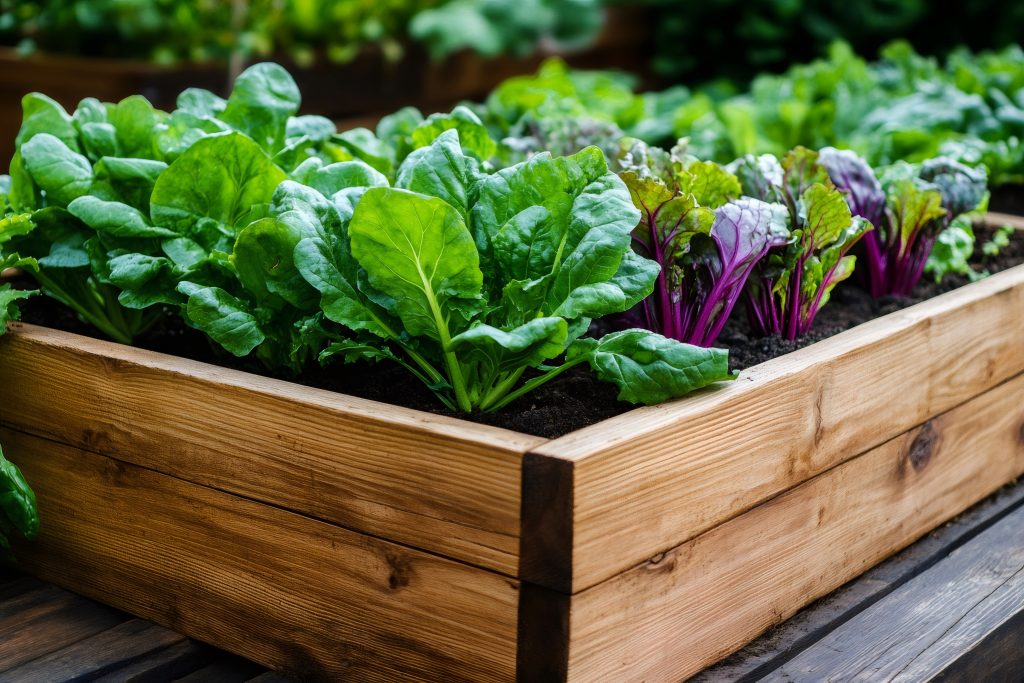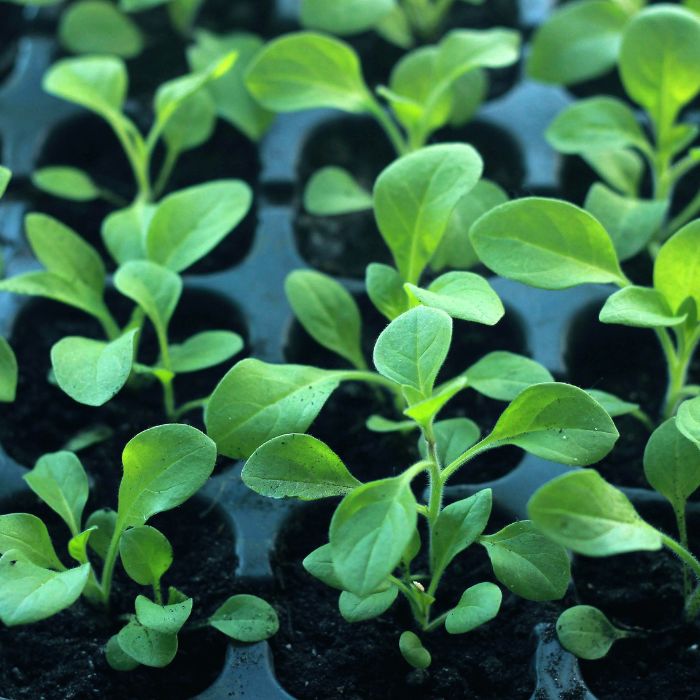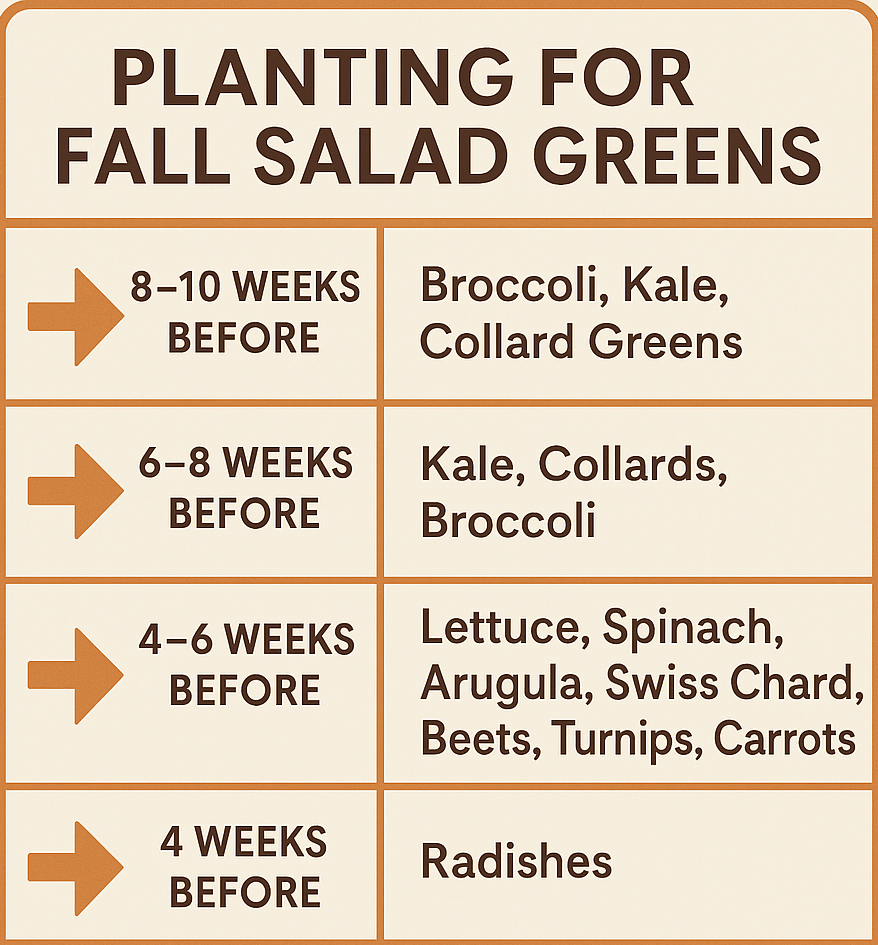Are you tired of paying high prices for salad greens? You should be! Salad greens are one of the easiest vegetables to grow — and fall is one of the best times to grow them. Even if you don’t have a lot of space, you can plant them in containers and enjoy fresh, crisp greens well into the cool weather. Consider planting in grow bags, Greenstalk planter, or other containers that can easily accommodate the shallow roots of leaf lettuce.

Those bagged greens you buy? They likely traveled over 1,500 miles to get to your plate, mostly from California or Arizona. That’s a long trip — and it’s no wonder they sometimes get recalled for contamination. Grocery store varieties are bred to survive travel and sit on shelves, not for flavor. Nothing beats the taste of homegrown greens, picked just minutes before you eat them.
So, are you ready to grow your own fall salad garden? Good — let’s get started! I’ll walk you through what to plant, when to plant it before your first frost, and how to make the most of the cool season.
What Is the Cool Season — and Why Fall Is Perfect
The cool season is when daytime temperatures average 35–65°F and frost is likely. Many vegetables actually grow better in these cooler temperatures than in the summer heat — and they often taste sweeter after a light frost.
Your fall cool season begins in late summer and runs until your first hard freeze. To find your timing:
-
Look up your first expected frost date with an online search: “first frost date + your city.”
-
Mark that date on your calendar.
-
Count backwards the recommended number of weeks for each vegetable (I’ll list these below).
Cool-Season Vegetables for a Fall Salad Garden
Here’s what grows well in fall:
Leafy greens & roots:
-
Lettuce
-
Spinach
-
Arugula
-
Swiss chard
-
Radish
-
Carrots
-
Beets
-
Turnips
Brassicas (can be part of your salad mix):
-
Kale
-
Collard greens
-
Kohlrabi
-
Broccoli (small side shoots can be added to salads)

Seeds or Transplants?
-
Direct seed in the garden: Leaf lettuce, spinach, carrots, radish, arugula, beets, and turnips. These don’t like having their roots disturbed.
-
Use transplants for a head start: Kale, collard greens, and broccoli can be planted as small plants to give them time to mature before frost.
Where to Plant
Cool-season crops don’t need as much sunlight as summer vegetables.
-
Light: At least 4 hours of direct sun per day. South-facing is best, west-facing is second choice.
-
Containers: Perfect for salad gardens! Look for varieties labeled “container” or “compact.”
-
Support: Sugar snap and snow peas need a trellis, even in fall.
When to Plant for Fall
This is where your first frost date matters. Count backwards from that date:
-
8–10 weeks before first frost: Start broccoli, kale, or collard seedlings indoors (if you want to transplant them out later).
-
6–8 weeks before first frost: Transplant young kale, collards, and broccoli starts into the garden.
-
4–6 weeks before first frost: Direct sow lettuce, spinach, arugula, Swiss chard, beets, turnips, and carrots.
-
4 weeks before first frost: Direct sow radishes (you can re-sow every 1–2 weeks for a continual harvest).

Frost Protection Tips
Most salad greens can survive light frosts — and some even taste sweeter after a nip of cold. But for extended harvest:
-
Keep row covers or frost cloth handy for sudden freezes and to extend the season several weeks past your first frost day. Look for a cloth that provides protection down to 28 degrees or lower.
Why Fall Salad Gardens Are a Win
-
Fewer pests than spring and summer
-
Better flavor in cool weather
-
Less bolting (plants going to seed)
-
The satisfaction of homegrown greens when the rest of the garden is winding down.
Happy Gardening
Karen

